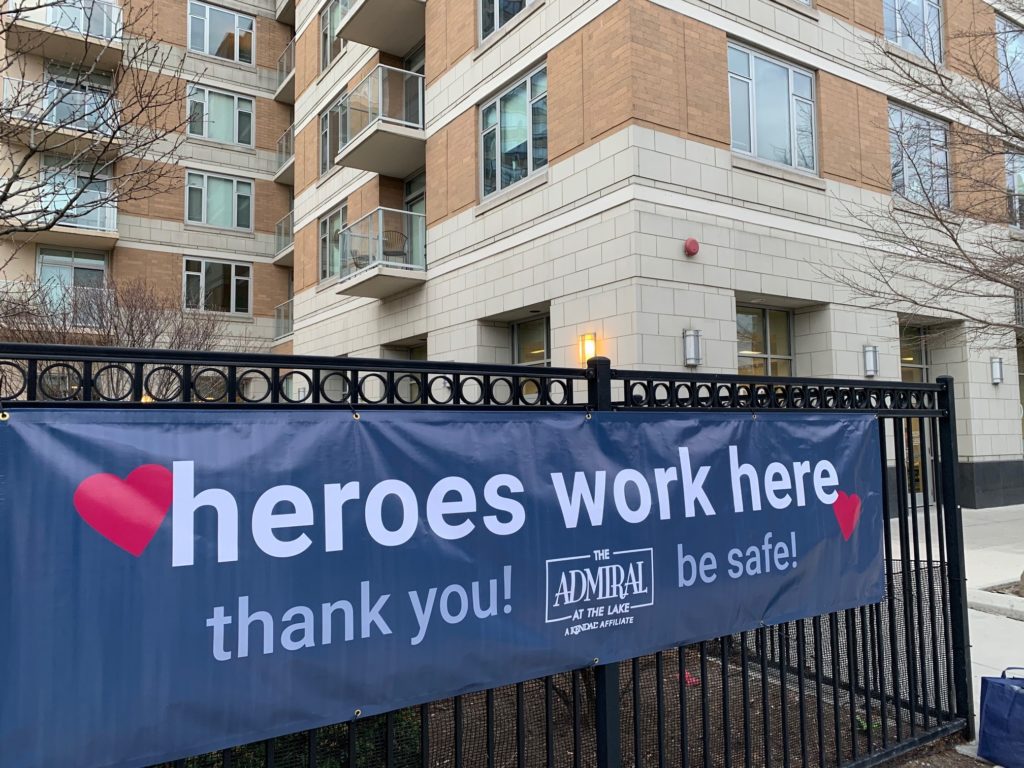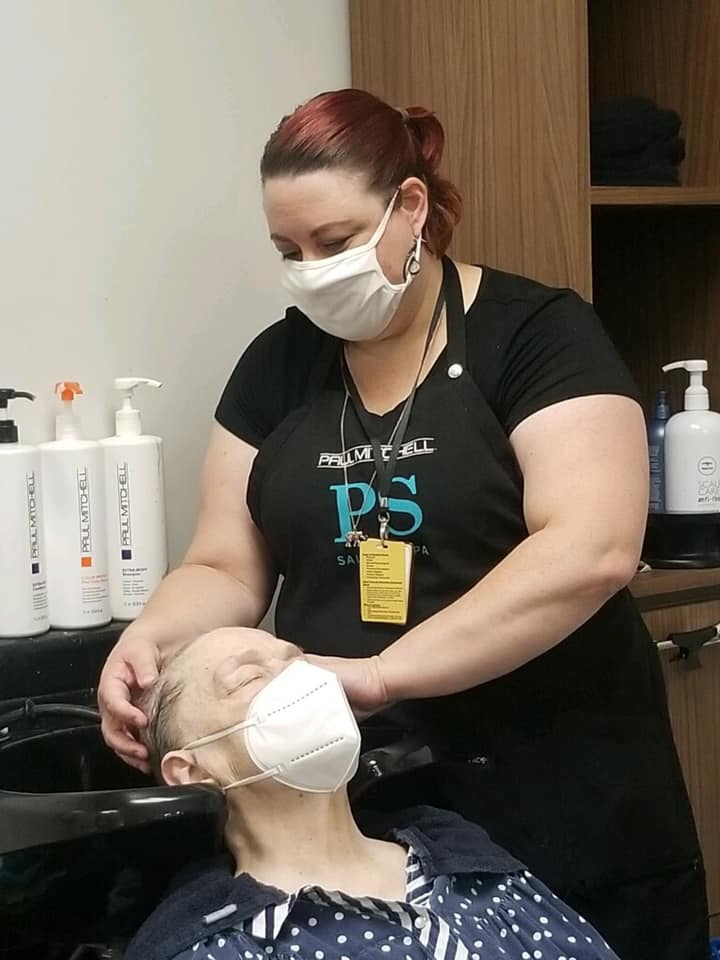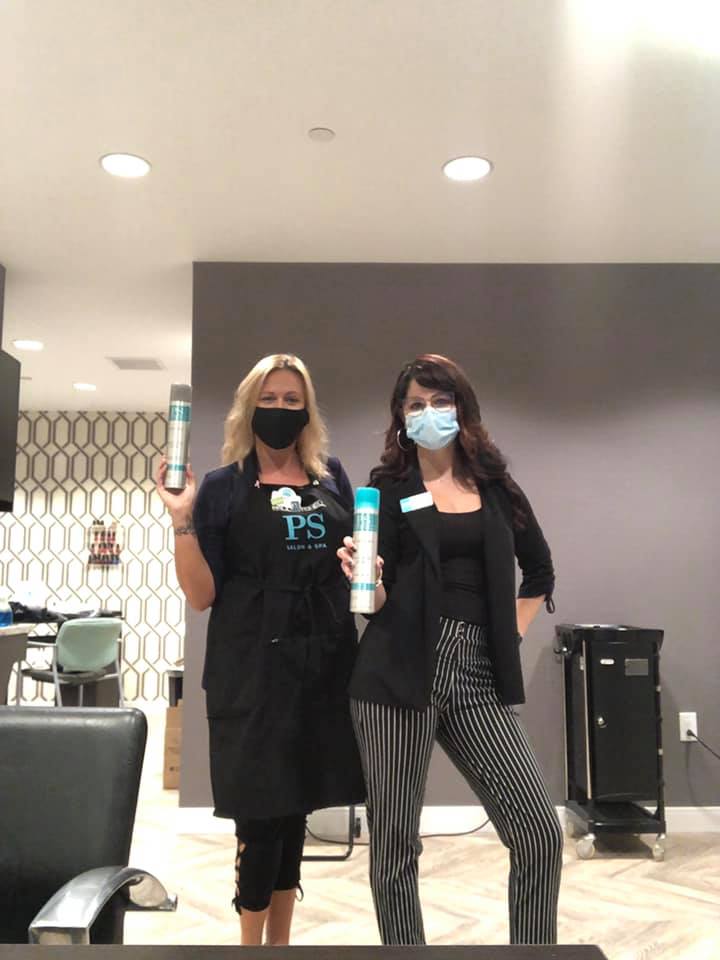Many senior living providers made the hard choice of shuttering their amenity spaces to prevent the spread of Covid-19. But as states across the country reopen for business, providers and the partners helping operate their amenities face an even harder challenge: safely bringing residents back into those spaces.
The challenges are steep. Take the example of salons in senior living buildings. Prior to Covid-19, PS Salon & Spa operated more than 1,000 senior living salons in about 760 communities across 36 states. On April 3, the entire company was furloughed. Now, the company is coming back to life, with the ambitious if daunting goal to ramp back up to nearly full strength in short order.
“It took us 11 years to put 1,000 salons together,” PS Salon CEO and Co-Founder John Polatz told Senior Housing News. “And now in 11 weeks we’re almost going from zero to 1,000 salons again.”
But that does not mean a return to business as usual, for salons or other amenities. As providers reopen amenities, they must do so in a way that residents find engaging and meaningful, but they also must take certain precautions to prevent the spread of Covid-19, a disease that flourishes in places where people are grouped together in close proximity.
In senior living restaurants, salons, spas, and other common spaces, providers are modifying their normal operations to fit the new normal. Where residents were once packed together in groups — such as at communal dining tables, in spa chairs or on workout equipment — they are now being kept at a distance. Where wearing surgical masks was once discouraged so as not to appear overly clinical, the practice is now mandatory for staff in many communities. And where sanitation and cleanliness were once important, they are now doubly so.
At the center of PS Salon’s reopening plan is a detailed, three-step plan to reopen and safely operate community salons during and beyond the Covid-19 pandemic. And salons are not the only amenities reopening; providers are also taking steps to reopen other common spaces and services, including dining venues and fitness centers.
Safer salons
If providers aren’t careful, senior living salons can pose a risk to residents in the age of the pandemic. For one, residents are often in close physical proximity to the stylists working on their hair or nails. And before the pandemic, these spaces often served as social hubs, which made them possible vectors for transmitting Covid-19.
But while sheltering in place may help stop the spread of Covid-19, it does not stop residents’ hair from growing. And in communities where PS Salon is already operating again, the company has seen an initial rush of appointments, particularly among independent living residents. In some communities, demand among those residents is three, five or even ten times what it usually is.
“Their colors are fading, their hair is long and they want the salons open quick,” Polatz said. “But it had to be done so in a way that was deliberate, thorough, researched and supported.”
To meet that demand, PS Salon spent the past month and a half working on a three-step reopening plan called “ACCORD,” which stands for assess, clean, communicate, organize, reopen and deliver. To put that guide together, the company spent time researching public health guidance, among other sources of information. The company is a licensed partner of Barbicide — a disinfectant brand used in salons and spas across the country — and leveraged that relationship for help with its infection control guidelines. PS Salon also leaned on another partnership with salon brand Paul Mitchell for help, and consulted a variety of other organizations for further research and support.
“During the shutdown, those six or eight weeks, our team stayed engaged,” Polatz said. “We’ve been doing online courses, and we had the infection control experts from Barbicide host a Zoom call with about 600 [members] of our team.”
PS Salon’s plan includes changes such as requiring salon technicians to wear disposable masks and diligently sanitize the spaces where they work. The company also has made salon sessions available only by appointment, and has encouraged its senior living partners to make sure all of their salon equipment is in good working order and is easy to clean.
Other measures include staggering resident appointments to allow for more cleaning and limiting sessions to just one specialist and resident, with some flexibility for communities that have larger salons which can safely hold more than one resident at a time.
“A larger salon that has two or three styling stations, a separate area for nails, a separate area for drying; if there’s enough distance, you could conceivably have potentially two clients,” Polatz said. “But lining seven people up under dryers with two operators — someone under the bowl, someone getting their hair dried, someone getting their hair colored — we’re not returning to those days anytime soon.”
Fitness at a distance
A similar trend is playing out in senior living gyms and fitness centers. Like salons and spas, these are often places where groups of residents are in close proximity. But also like salons, there are ways to make senior living gyms safer for residents who want to use them.
For instance, Tulsa-based life plan community Montereau reopened its fitness center and pool weeks ago, with the caveat that both are only limited to four residents at a time. But so far, demand for using the gym is surprisingly low, a testament to the level of caution residents are feeling over Covid-19, according to Kristen Schooley, the community’s director of wellness.
“Some people just don’t feel comfortable coming back to the fitness center at this point in time,” Schooley told SHN. “I think we also are learning … that fitness is a social event for a lot of our residents.”
For the residents who have returned to the fitness center, the community has asked them to call ahead to reserve 45-minute time slots — and so far, that has worked well in making sure residents aren’t using the spaces all at once.
“We thought this would be more of a logistical nightmare than it actually has been,” Schooley told SHN. “I think that’s because people have been able to set up recurring appointments, and because we also have not been inundated in the way that we expected to be.”
Still, there are some challenges in reopening gyms. One is that the life plan community must stay vigilant regarding which pieces of equipment its residents are using in order to enforce social distancing, and to properly clean the equipment later.
“We unfortunately have a fairly compact fitness center, so a lot of our equipment is not socially distanced,” Schooley said. “What we’ve had to do is make sure that we know who’s signing up to use the treadmill, who’s signing up to use the NuStep machine, who’s signing up to use the weight machines … so that we can make sure people are spaced appropriately.”
Mask-wearing is another challenge. While residents are free to work out without a mask, the community has told them they are required to wear one during the trip between the fitness center and their rooms. But getting residents to fully embrace wearing masks has been among the provider’s biggest obstacles amid Covid-19 overall, Schooley said.
The provider has also had to remind residents not to socialize before or after their workouts, and has had to press pause on its fitness classes for the time being. In the meantime, some residents are making do with virtual fitness programming through the provider’s in-house television station. And Montereau has also loaned out fitness equipment to residents, such as free weights and stability balls, to use in their own personal space.
“Our residents have actually really enjoyed being able to work out in their own homes,” Schooley said. “That has been a lifesaver, I think, for a lot of people.”
Reopening restaurants
At the outset of the pandemic, many senior living providers were forced to shutter their communal dining settings in favor of in-room delivery or takeout.
This is still the case for The Kendal Corp., a Kennett Square, Pennsylvania-based nonprofit with 13 affiliated life plan communities across the country. Kendal communities have delivered meals to residents in their rooms since March, and that practice will continue into the foreseeable future, according to Ben Butler, the organization’s vice president of culinary services.
But, the provider is also thinking about how it can safely reopen its dining rooms and restaurants to residents when that time comes. The organization is taking cues from states and local jurisdictions, which are setting timelines and guidelines for reopening dining spaces around the country. It is also watching to see where in its footprint Covid-19 is spreading, and how quickly, to determine the best course of action.
“It will be easy for us to go from this posture of delivering meals to … takeout, where residents come down and pick up a meal and go back to their apartment or their home to eat,” Butler said. “What’s going to be difficult is for us to then go from that step to one where we’re allowing … communal dining.”
In coming up with its own plan, Kendal is currently researching guidelines and recommendations for reopening from agencies and organizations that include the Centers for Disease Control and Prevention (CDC), the World Health Organization and the National Restaurant Association. The company is also studying directives from the states in which it operates — but it isn’t yet clear whether senior living dining venues will be held to the same standards as consumer-facing ones.
“For example, if a dining room in Pennsylvania has to limit to 25% capacity and they’re recommending to not turn a table, for a community that has 325 residents and 140 seats in their dining room, that is going to be interesting,” Butler said. “Each community is going to have their own modified plan based on their number of residents [and] their footprint.”
Resident feedback is also an important part of Kendal’s strategy. The organization’s culinary directors have begun reaching out to residents to ask for their preferences in reopening, with a variety of responses.
“Some residents want to continue to opt out of the meal plan for a while, and some residents want to come in right away and start dining together,” Butler said. “Where we’re headed is a program that is very flexible and meets people where they’re at.”
As for some of the logistical aspects of a new plan, Butler foresees more sneeze guards in the dining room, strict mask- and glove-wearing among staff, touchless door handles and likely a smaller number of staffers working the room than before the pandemic. Kendal has already implemented a kitchen staffing model that maintains six feet of separation between workers.
“If we’re only serving at 25% capacity, we’ll probably do that with 20% of what we would normally use for staff,” Butler said. “Another 20% or 25% may be doing room service and another 25% may be doing carry out service. So, all the work still needs to be done.”
Kendal also has plans in place to reverse course if Covid-19 infections spike again. But whatever lies ahead, Butler is convinced that the industry will not be able to go back to the way it operated before the pandemic.
“We’re going to have to have a different plan than we had in the past,” he said. “It’s cliche now to say the ‘new normal,’ but that’s where we’re headed.”
Companies featured in this article:
Kendal Corporation, Montereau, PS Salon & Spa, The Kendal Corporation





